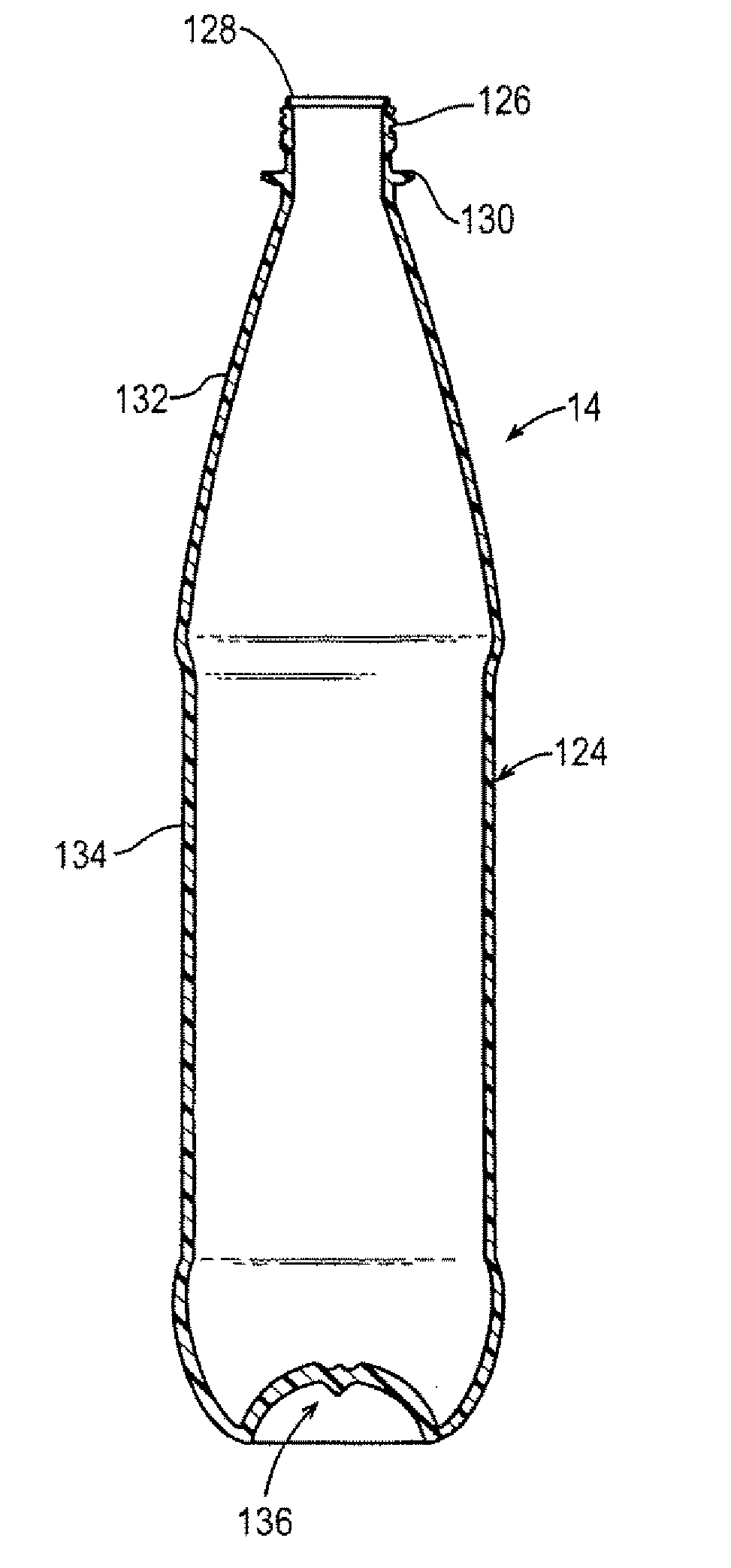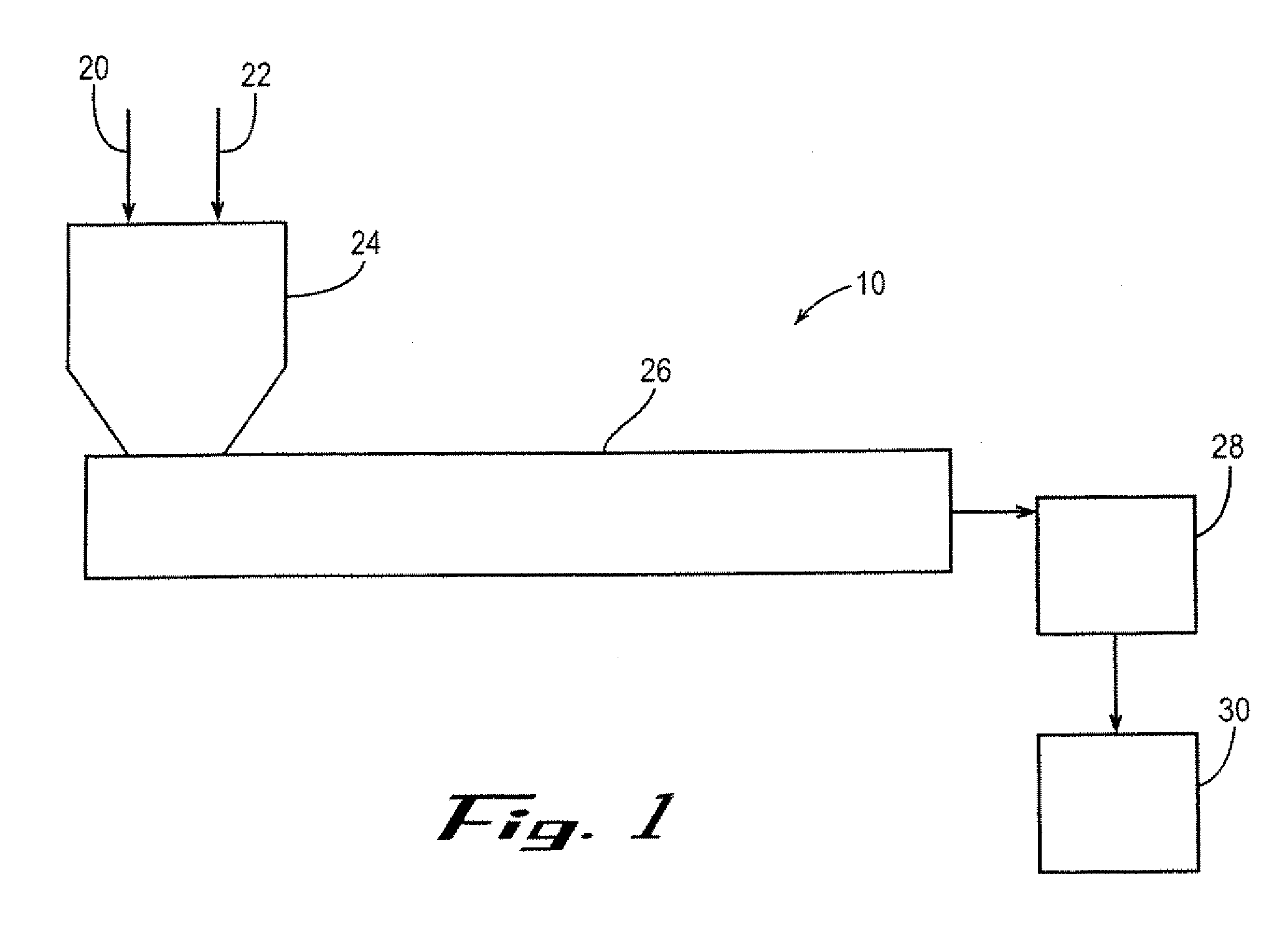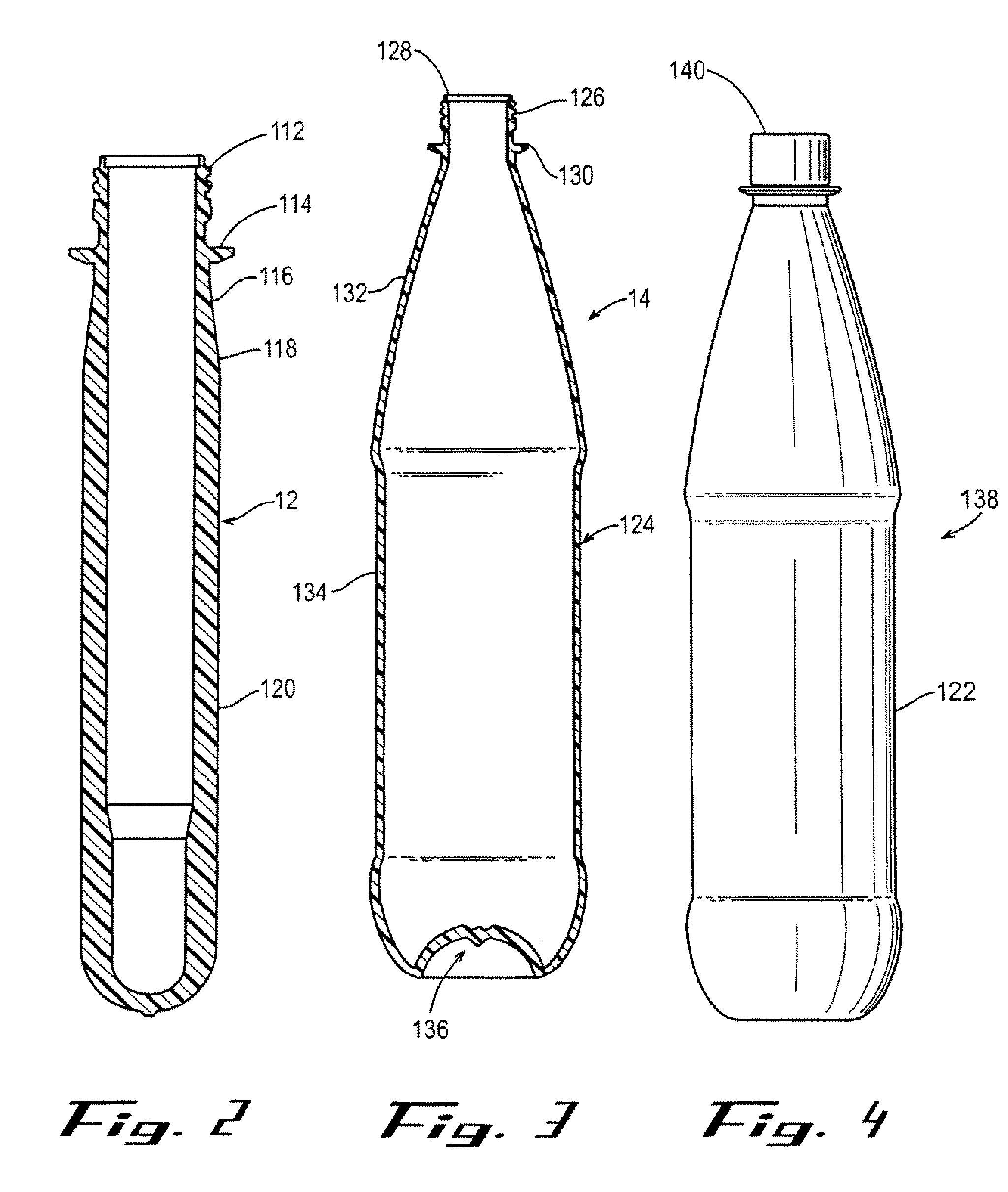Container and composition for enhanced gas barrier properties
a technology of enhanced gas barrier and container, which is applied in the field of packaging beverages, can solve the problems of limiting the application of pet for smaller sized packages, limiting the use of smaller pet containers for packaging carbonated soft drinks, and increasing the relative loss rate, so as to achieve enhanced gas barrier, enhanced gas barrier, and enhanced gas barrier
- Summary
- Abstract
- Description
- Claims
- Application Information
AI Technical Summary
Benefits of technology
Problems solved by technology
Method used
Image
Examples
example 1
[0109] A commercially available polyester container grade resin (Kosa, Spartanburg, S.C.) was dried in a vacuum oven at 140° C. overnight to a moisture level below 50 ppm. The additives were dried in a vacuum oven at 70° C. overnight to remove surface moisture. Containers were made with the PET, both alone and in combination with varying amounts of additives. A lab scale Arburg unit cavity injection molding machine was used for injection molding. The preforms were blow molded with a Sidel SBO ⅔ blow molding machine to make acceptable contour containers. A 24.5 g preform made a 500 mL container.
[0110] The oxygen transmission rates of the containers were then measured using a Mocon 2 / 60 model instrument at 22.2° C. and 50% relative humidity (RH) with the N2 / H2 (99:1) and air purging rates of 10 mL / min on opposite sides. The results are shown in Table 1. The barrier improvement factor (BIF) was defined as the ratio of the oxygen transmission rate of the polyester container with additi...
example 2
[0112] A commercially available polyester container grade resin (Voridian, Kinosport, Tenn.) was prepared, injection molded, and blow molded as described in Example 1. A 26.5 g preform made a 20 oz container.
[0113] The bottles were filled with dry ice to achieve an internal pressure of 56 psi. The loss rate of CO2 from the bottles was measured at 22° C. and 50% RH using a method described by U.S. Pat. No. 5,473,161, which is hereby incorporated by reference in its entirety. The results are shown in Table 2. The barrier improvement factor (BIF) was defined as the ratio of the CO2 loss rate of the polyester container without additive was divided by the CO2 loss rate of the polyester container with additive. The shelf life of the simulated carbonated soft drink for each container also was calculated as described by U.S. Pat. No. 5,473,161.
TABLE 2CO2 Loss of 20 oz PET containersWeightCO2 shelf lifeAdditivePercent(Weeks)CO2 BIFN / A08.71.00Caffeine0.29.21.1Caffeine7.714.61.7Caffeine1017...
example 3
[0115] A commercially available polyester container grade resin (Kosa, Spartanburg, S.C.) was prepared, injection molded, and blow molded as described in Example 1. A 21 g preform made a 12 oz container. The loss rate of CO2 from the bottles and CO2 shelf life were determined as described in Example 2. The results are shown in Table 3.
TABLE 3CO2 Loss 12 oz PET containersWeightCO2 shelf lifeAdditivepercentIV (dL / g)(Weeks)CO2 BIFN / A00.778.91.0Caffeine10.7710.41.2Caffeine30.7512.21.4Caffeine50.7713.81.6
[0116] The carbon dioxide BIF of the 12 oz containers improved significantly with the addition of caffeine to the PET composition, significantly increasing the carbon dioxide shelf life of the containers without impairing the IV of the containers.
PUM
| Property | Measurement | Unit |
|---|---|---|
| Fraction | aaaaa | aaaaa |
| Fraction | aaaaa | aaaaa |
| Percent by mass | aaaaa | aaaaa |
Abstract
Description
Claims
Application Information
 Login to View More
Login to View More - R&D
- Intellectual Property
- Life Sciences
- Materials
- Tech Scout
- Unparalleled Data Quality
- Higher Quality Content
- 60% Fewer Hallucinations
Browse by: Latest US Patents, China's latest patents, Technical Efficacy Thesaurus, Application Domain, Technology Topic, Popular Technical Reports.
© 2025 PatSnap. All rights reserved.Legal|Privacy policy|Modern Slavery Act Transparency Statement|Sitemap|About US| Contact US: help@patsnap.com



